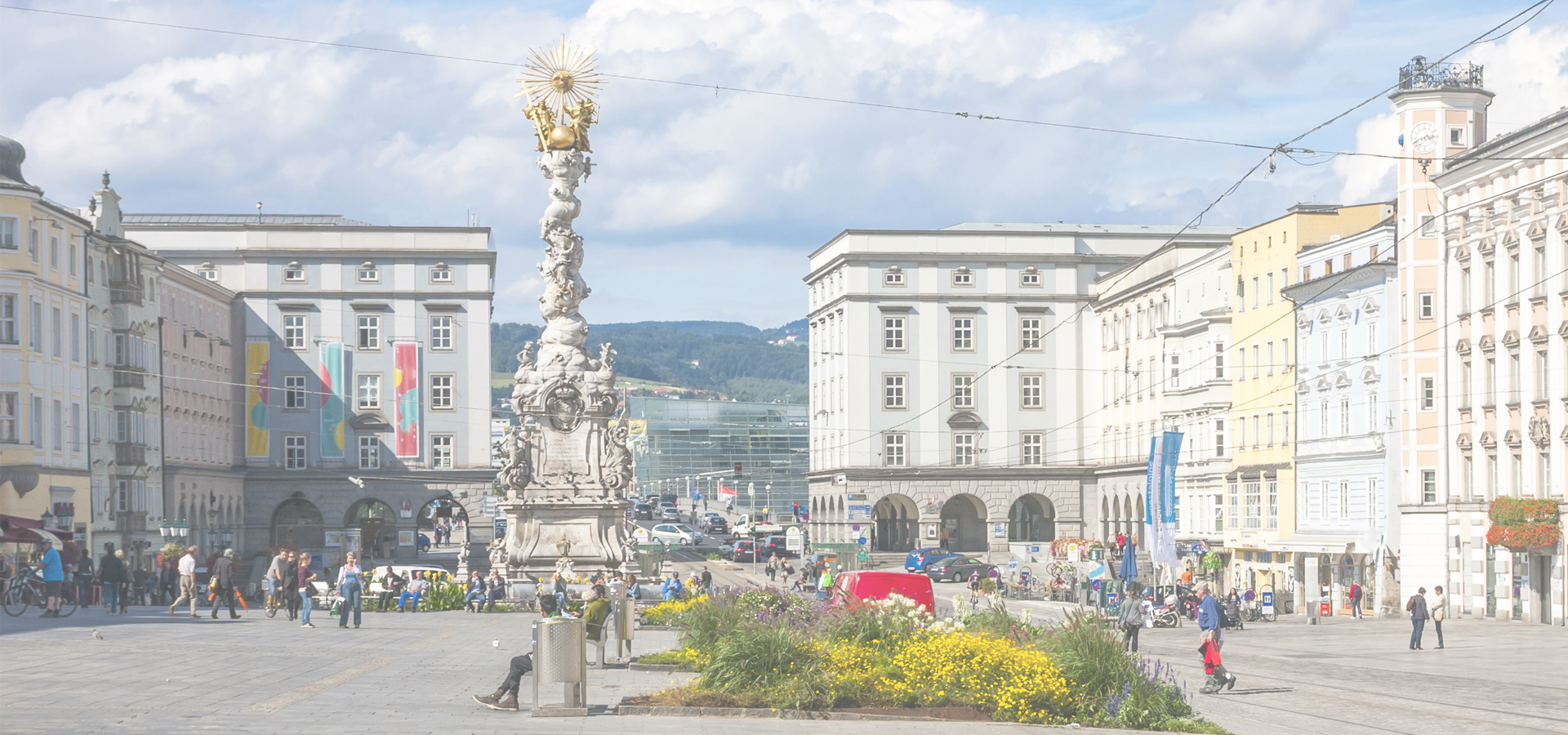Braunau am Inn, Upper Austria State, Austria
🇦🇹 Braunau am Inn is a town in Upper Austria on the border with Germany. It is known for being the birthplace of Adolf Hitler.
Geography The town is on the lower river Inn below its confluence with the Salzach, where it forms the border with the German state of Bavaria, halfway on the road between the state capital Linz and the Bavarian capital Munich, about 60 km (37 mi) north of Salzburg. Braunau is connected by bridges over the Inn with its Bavarian counterpart 🇩🇪 Simbach am Inn. A traditional port of entry, all border controls have been abolished since the implementation of the Schengen Agreement by Austria in 1997.
The town gave its name to the administrative district (Bezirk).
Populated places The municipality of Braunau am Inn consists of the following cadastral communities: Braunau am Inn, Osternberg, and Ranshofen; while further subdivided into populated places: • Aching; • Au; • Blankenbach; • Braunau am Inn; • Braunau Neustadt; • Gasteig; • Haiden; • Haselbach; • Himmellindach; • Höft; • Laab; • Lach; • Lindach; • Maierhof; • Neue Heimat; • Oberrothenbuch; • Osternberg; • Ranshofen; • Roith; • Scheuhub; • Tal; • Unterrothenbuch.
History While the abbey of Ranshofen was already mentioned in the course of the deposition of Tassilo III, Duke of Bavaria, in 788, Braunau itself first appeared as Prounaw in an 1120 deed. The Innviertel region then was part of the Duchy of Bavaria.
Braunau received town rights in 1260, one of the first in present-day Austria. It became a fortress town and important trading route junction, dealing with the salt trade and with ship traffic on the Inn. As a major Bavarian settlement, the town played an outstanding role in the Bavarian uprising against the Austrian occupation during the War of the Spanish Succession, when it hosted the Braunau Parliament, a provisional Bavarian Parliament in 1705 headed by Georg Sebastian Plinganser (born 16 April 1680 in Pfarrkirchen; died 7 May 1738 in Augsburg).
The Late Gothic Braunau parish church dedicated to Saint Stephen was built from 1439 to 1466, replacing an older chapel. Its 87 m (285 ft) high spire is one of the tallest in Austria and the town's landmark. The remains of the fortress today house a museum and parts of the former town walls can still be seen. Another museum is housed in refurbished 18th-century public baths.
Within 40 years, Braunau changed hands three times: In 1779, it became an Austrian town under the terms of the Treaty of Teschen, which settled the War of the Bavarian Succession. During War of the Third Coalition, the Nuremberg bookseller Johann Philipp Palm was arrested at the Braunau fortress by French troops and executed for high treason by personal order of Napoleon in 1806. Under the terms of the 1809 Treaty of Schönbrunn, Braunau became Bavarian again in 1809. In 1816, during reorganisation of Europe after the Napoleonic Wars at the Congress of Vienna, the Kingdom of Bavaria ceded the town to the Austrian Empire and was compensated by the gain of Aschaffenburg. Braunau has been Austrian ever since.
Braunau remained a garrison town of the Austro-Hungarian Army and became the site of a large prisoner of war camp in World War I. After the Nazi Anschluss to Nazi Germany in 1938, Ranshofen, which at that time had one of Austria's largest aluminium plants, was incorporated into Braunau. Since 1992, the annual Braunau Contemporary History Days initiated by Andreas Maislinger concentrate on accounting for the past; the town's administration awards the Egon Ranshofen-Wertheimer Award, named after native diplomat Egon Ranshofen-Wertheimer, to honour committed Austrians abroad. Several Stolpersteine were installed in Braunau by the artist Gunter Demnig.
Economy Braunau has a full range of industries including electronics, metal (AMAG), woodworking, and glass. The town also has the largest aluminium works in Austria.
Education The BHAK Braunau is the oldest educational establishment in the Innviertel.
The HTL Braunau has been awarded "Most Innovative School in Upper Austria" 7 times, in the years 2012-2014 and 2017-2020.
Sport After two successful seasons, the local football team, SV Braunau, reached the Austrian 1st Division before suddenly going bankrupt in 2000. The team was re-founded as FC Braunau.
Europe/Vienna/Upper_Austria

Braunau am Inn has a population of over 17,095 people. Braunau am Inn also forms the centre of the wider Braunau am Inn District which has a population of over 99,848 people.
To set up a UBI Lab for Braunau am Inn see: https://www.ubilabnetwork.org Twitter: https://twitter.com/UBILabNetwork
Twin Towns - Sister Cities Braunau am Inn has links with:
🇸🇰 Dolný Kubín, Slovak Republic🇺🇸 Oak Harbor 48.283
🇫🇷 Saint-Dié-des-Vosges 48.284
🇺🇸 Coupeville 48.217
🇩🇪 Luckenwalde 13.167
Locations Near: Braunau am Inn 13.0333,48.25
🇩🇪 Pfarrkirchen 12.917,48.417 d: 20.4
🇩🇪 Burghausen 12.833,48.167 d: 17.5
🇩🇪 Altötting 12.679,48.228 d: 26.4
🇦🇹 Salzburg 13.045,47.802 d: 49.8
🇦🇹 Ried im Innkreis 13.49,48.21 d: 34.1
🇩🇪 Passau 13.45,48.567 d: 46.8
🇩🇪 Traunstein 12.633,47.867 d: 52
🇩🇪 Bad Reichenhall 12.867,47.717 d: 60.6
Antipodal to: Braunau am Inn -166.967,-48.25
🇹🇴 Nuku'alofa -175.216,-21.136 d: 16911.5
🇦🇸 Pago Pago -170.701,-14.279 d: 16222.1
🇼🇸 Apia -171.76,-13.833 d: 16162.7
🇵🇫 Papeete -149.566,-17.537 d: 16253.2
🇺🇸 Hilo -155.089,19.725 d: 12364.6
🇺🇸 Maui -156.446,20.72 d: 12274.6
🇺🇸 Maui County -156.617,20.868 d: 12260.7
🇺🇸 Wailuku -156.505,20.894 d: 12256.3